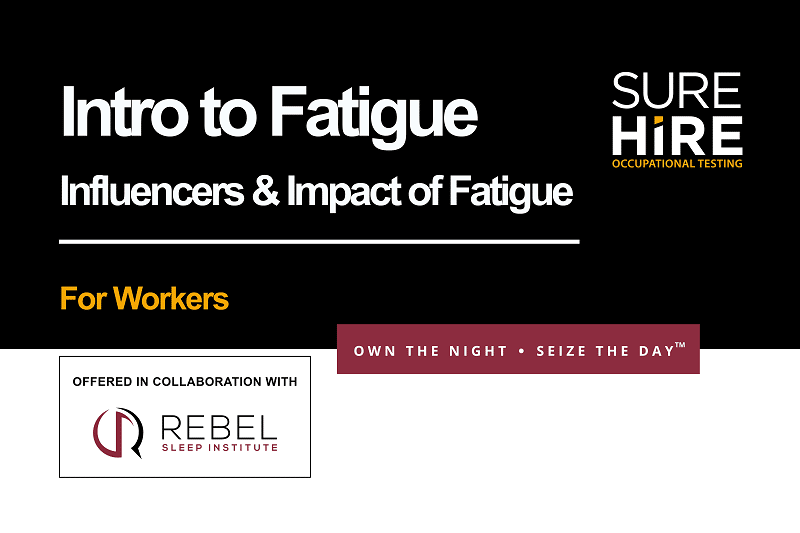TAKEAWAY: Occupational testing for the transportation industry might be mandatory in many instances, but it also offers substantial benefits and a clear return on investment for employers.
Jump Ahead
The transportation industry has always been a bit of an anomaly when it comes to assessing the value of occupational testing. Employers more often focus their assessments of its impact on compliance and regulations rather than return on investment. In large part, this is because they have little choice. Occupational testing in many forms is mandated in this sector. This is particularly true in the United States, where strict Department of Transportation (DOT) regulations govern most of the industry. Even in Canada, cross-border truckers are subject to DOT rules. As such, little attention has been paid to measuring the value of occupational testing in this industry. However, that value is significant.
Transportation companies tend to concentrate their health and safety efforts in 2 key areas: drug and alcohol testing as mandated by DOT and education and training as mandated by numerous state, provincial, and federal agencies. Annually, the transportation sector invests an average of $1,326 per employee on occupational health and safety, including occupational testing, according to research recently published by the Institute for Work & Health (IWH). These efforts can produce significant value for employers. The study’s authors reported the financial benefit for employers at an average of $2980 per employee or an estimated return on investment of 114 percent! They also concluded that the scale of an employer’s expenditures on occupational health and safety, including occupational testing, is directly related to reducing work-related injury and illness.
The Impact of Health and Safety Education and Training
Education and training are mandatory for many DOT employers and necessary for compliance, but they also have an inarguable impact on the health and safety of workers and the public. For example, video intelligence has become invaluable as a coaching tool for many fleet managers who use it to assess employee behaviours and then craft coaching to correct them. The result is a fleet that is safer and more efficient. According to the American Automobile Association, this approach can lower the rate of collisions by up to 30%, preventing as many as 63,000 crashes, 17,733 injuries, and 293 deaths every year.
In particular, wellness programs and related training can positively affect transportation workers, especially long-haul truckers, who are more prone to numerous lifestyle-related health risks. These positive effects can include reduced health care costs and absenteeism, increased productivity, and improved employee retention.

Fatigue Risk Management
Fatigue is a direct, well-known contributor to motor vehicle and workplace accidents resulting in injury and death. Prevention begins with educating your workforce! Our 30-minute micro-module will help you and your workforce manage the risks of fatigue-related injury and fatality in the workplace.
The Impact of Drug and Alcohol Testing
Alcohol and illicit drug use continue to be a problem in the transportation industry. A study by American Addiction Centers found that US truckers had the world’s highest frequency of positive alcohol tests. In fact, since January 2020, more than 72,000 truck drivers have been taken off the road because they failed required drug tests, according to data from the Federal Motor Carrier Safety Administration (FMSA) Drug and Alcohol Clearinghouse.
However, a related study claims that the number of truckers who use alcohol and drugs on the job is underreported and nearly double. This study further confirmed that cocaine, not marijuana, was their drug of choice. Truckers themselves have confirmed these statistics. A series of studies revealed that over 90% of truckers admitted drinking alcohol, and 82.5% used amphetamines on the job.
Numerous studies over the years have linked the efficacy of random and pre-employment testing as both a deterrent and a critical safety measure. These tests take transportation workers off the roads and rails and out of the air who might otherwise pose a danger to themselves or others. They also identify workers in need of help.
The legalization of marijuana and subsequent use is also affecting the transportation sector. Statistics from the FMCSA Drug and Alcohol Clearinghouse point to a rise in both failed drug tests and test refusals, much of it associated with marijuana use. These statistics triggered an automatic doubling of the random testing employers must conduct on their drivers to 50% of the workforce. Ramped-up testing requirements are a direct result of increased use and are designed to lower rates of drug use and positive tests. The Controlled Substances and Alcohol Use and Testing final rule of 2001 mandates that the testing rate increase whenever the FMCSA annual survey of motor carrier test results shows a positive rate of 1% or more.
Many positive drug tests and refusals are also being reported to the Clearinghouse by MROs from pre-employment drug testing. This type of testing can significantly reduce employers’ costs in everything from healthcare costs to accidents. One intriguing study established a direct correlation between pre-employment drug screening and lower post-accident drug screening positivity. And interestingly, 30% of potential employees have admitted they are less likely to apply to a company that does pre-employment drug testing.
The pandemic also surfaced the effects drug, and alcohol testing can have on deterring use in the workplace. The growth in the use and abuse of alcohol and both illegal and legal drugs during the pandemic has been widely reported in the media. However, it also slowed the delivery of drug and alcohol testing. Research published in February 2021 pointed to “decreased drug testing overall, with increased positivity for high-risk drugs and dangerous drug combinations.” The study suggests a correlation between lower rates of testing and increased use. This translates into additional risks and costs for employers.
Occupational testing for the transportation industry might be mandatory in many instances, but it also offers substantial benefits and a clear return on investment for employers.

SureHire Occupational Testing
SureHire offers a range of drug and alcohol testing services, including DOT-Random testing, Clearinghouse Management, and Impairment Awareness Training.
If you’re looking for a trusted provider to help you improve your safety culture and help keep your workforce safe, contact us today!
You May Also Be Interested In…
- Do You Have Reasonable Suspicion?
 Employers cannot initiate reasonable suspicion testing without first going through the 5-step process. Reasonable suspicion training provides critical information about how to initiate reasonable suspicion testing, including the 5-step process and other tools that employers can use to help manage the misuse of alcohol and drugs in the workplace.
Employers cannot initiate reasonable suspicion testing without first going through the 5-step process. Reasonable suspicion training provides critical information about how to initiate reasonable suspicion testing, including the 5-step process and other tools that employers can use to help manage the misuse of alcohol and drugs in the workplace. - An Employer’s Guide: What You and Your Employees Need to Know About DOT Drug & Alcohol Testing
 When implementing or maintaining DOT Drug & Alcohol testing, there are key areas that employers should consider.
When implementing or maintaining DOT Drug & Alcohol testing, there are key areas that employers should consider. - SureHire Occupational Testing Acquires COHR Health: A Positive Step Towards Safe, Healthy, Productive Workforces and Communities
 We are thrilled to announce that today, May 6, 2024, SureHire Occupational Testing has officially acquired COHR Health, a well-known leader in occupational health services. Read on…
We are thrilled to announce that today, May 6, 2024, SureHire Occupational Testing has officially acquired COHR Health, a well-known leader in occupational health services. Read on… - Occupational Testing Use Case – Mining
 In this case study, we will explore how mining companies can use various types of occupational tests to reduce Total Recordable Incident Rates (TRIR) long term.
In this case study, we will explore how mining companies can use various types of occupational tests to reduce Total Recordable Incident Rates (TRIR) long term. - 9 Strategies to Keep Workers Cool on Drilling Sites During Hot Summer Months
 This article delves into strategies to keep workers cool and safe on drilling sites during the hot summer months.
This article delves into strategies to keep workers cool and safe on drilling sites during the hot summer months. - Hearing Conservation Basics: How to Manage Occupational Noise
 Learn how to proactively mitigate occupational noise risks and help prevent NIHL among workers.
Learn how to proactively mitigate occupational noise risks and help prevent NIHL among workers.

